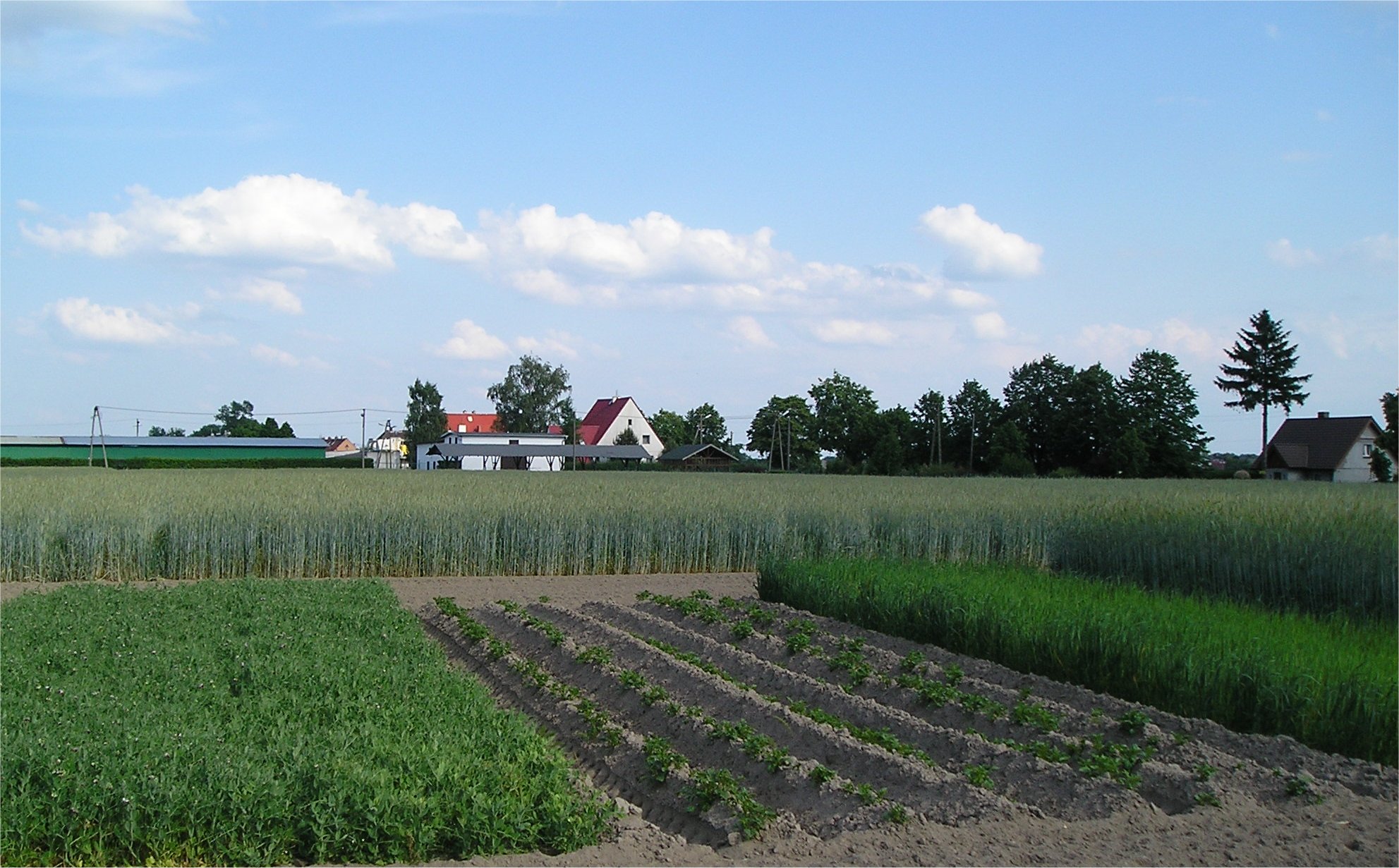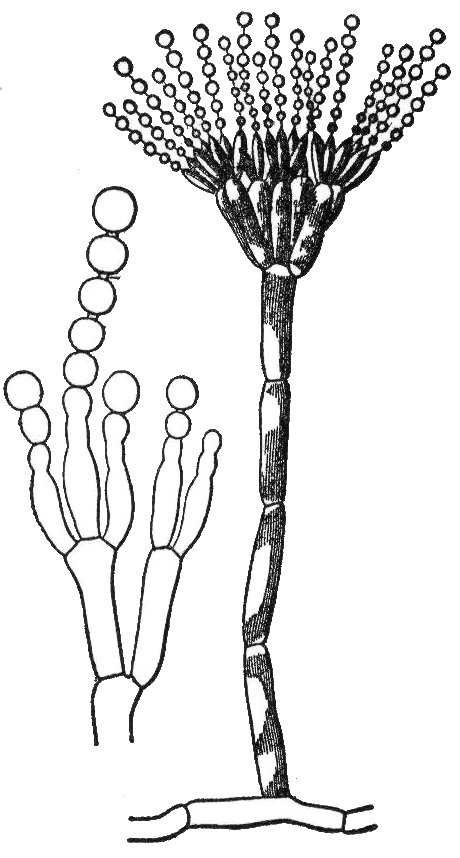|
Cercospora Melongenae
''Cercospora melongenae'' is a fungal plant pathogen that causes leaf spot on eggplant (''Solanum melongenum''). It is a deuteromycete fungus that is primarily confined to eggplant species.Welles, Colin G. "Cercospora Leaf Spot of Eggplant." Phytopathology Vol.12 No.2 (1922).Vijaya, T., M. Nagalaxmidevamma, and A. Sreeramulu. "Epidemiology of Cercospora Leaf Spot Disease of Brinjal - Process of Penetration." Environment & Ecology 9.2 (1991): 396-98. Some other host species are ''Solanum aethiopicum'' and ''Solanum incanum''. This plant pathogen only attacks leaves of eggplants and not the fruit."Eggplant." Eggplant. PlantVillage It is fairly common among the fungi that infect community gardens and home gardens of eggplant. Generally speaking, ''Cercospora melongenae'' attacks all local varieties of eggplants, but is most severe on the Philippine eggplant and less parasitic on a Siamese variety. Signs and symptoms ''Cercospora melongenae'' is found primarily in warm climates c ... [...More Info...] [...Related Items...] OR: [Wikipedia] [Google] [Baidu] |
Leaf Spot
A leaf spot is a limited, discoloured, diseased area of a leaf that is caused by fungal, bacterial or viral plant diseases, or by injuries from nematodes, insects, environmental factors, toxicity or herbicides. These discoloured spots or lesions often have a centre of necrosis (cell death).Horst, R. (2008). Westcott’s Plant Disease Handbook (Seventh Edition.). Springer Netherlands. Symptoms can overlap across causal agents, however differing signs and symptoms of certain pathogens can lead to the diagnosis of the type of leaf spot disease. Prolonged wet and humid conditions promote leaf spot disease and most pathogens are spread by wind, splashing rain or irrigation that carry the disease to other leaves.Lucas, G., & Campbell, L. (1992). Introduction to Plant Diseases Identification and Management (2nd ed. 1992.). Springer US. https://doi.org/10.1007/978-1-4615-7294-7 Description Leaf spots are a type of plant disease that are usually caused by pathogens and sometimes othe ... [...More Info...] [...Related Items...] OR: [Wikipedia] [Google] [Baidu] |
Stomata
In botany, a stoma (: stomata, from Greek ''στόμα'', "mouth"), also called a stomate (: stomates), is a pore found in the epidermis of leaves, stems, and other organs, that controls the rate of gas exchange between the internal air spaces of the leaf and the atmosphere. The pore is bordered by a pair of specialized parenchyma cells known as guard cells that regulate the size of the stomatal opening. The term is usually used collectively to refer to the entire stomatal complex, consisting of the paired guard cells and the pore itself, which is referred to as the stomatal aperture. Air, containing oxygen, which is used in respiration, and carbon dioxide, which is used in photosynthesis, passes through stomata by gaseous diffusion. Water vapour diffuses through the stomata into the atmosphere as part of a process called transpiration. Stomata are present in the sporophyte generation of the vast majority of land plants, with the exception of liverworts, as well as so ... [...More Info...] [...Related Items...] OR: [Wikipedia] [Google] [Baidu] |
Vegetable Diseases
Vegetables are edible parts of plants that are consumed by humans or other animals as food. This original meaning is still commonly used, and is applied to plants collectively to refer to all edible plant matter, including flowers, fruits, stems, leaves, roots, and seeds. An alternative definition is applied somewhat arbitrarily, often by culinary and cultural tradition; it may include savoury fruits such as tomatoes and courgettes, flowers such as broccoli, and seeds such as pulses, but exclude foods derived from some plants that are fruits, flowers, nuts, and cereal grains. Originally, vegetables were collected from the wild by hunter-gatherers and entered cultivation in several parts of the world, probably during the period 10,000 BC to 7,000 BC, when a new agricultural way of life developed. At first, plants that grew locally were cultivated, but as time went on, trade brought common and exotic crops from elsewhere to add to domestic types. Nowadays, most ... [...More Info...] [...Related Items...] OR: [Wikipedia] [Google] [Baidu] |
Cercospora
''Cercospora'' is a genus of ascomycete fungi. Most species have no known sexual stage, and when the sexual stage is identified, it is in the genus '' Mycosphaerella''. Most species of this genus cause plant diseases, and form leaf spots. It is a relatively well-studied genus of fungi, but there are countless species not yet described, and there is still much to learn about the best-known members of the genus. It has a cosmopolitan distribution worldwide. Selected species The GBIF accepts 837 species (as of July 2023); See also List of Cercospora species *'' Cercospora acetosella'' - found on sheep sorrel and other docks *'' Cercospora aciculina'' *'' Cercospora agerati'' *'' Cercospora alabemensis'' *'' Cercospora alismatis'' *'' Cercospora althaeina'' *'' Cercospora angreci'' - causes leaf spot of orchids *'' Cercospora angulata'' *'' Cercospora apii'' - causes leaf spot on celery, and found on other plants, including ''Impatiens'' * ''Cercospora apii'' f.sp. ''cleroden ... [...More Info...] [...Related Items...] OR: [Wikipedia] [Google] [Baidu] |
Crop Rotation
Crop rotation is the practice of growing a series of different types of crops in the same area across a sequence of growing seasons. This practice reduces the reliance of crops on one set of nutrients, pest and weed pressure, along with the probability of developing resistant pests and weeds. Growing the same crop in the same place for many years in a row, known as monocropping, gradually depletes the soil of certain nutrients and promotes the proliferation of specialized pest and weed populations adapted to that crop system. Without balancing nutrient use and diversifying pest and weed communities, the productivity of monocultures is highly dependent on external inputs that may be harmful to the soil's fertility. Conversely, a well-designed crop rotation can reduce the need for Fertilizer, synthetic fertilizers and herbicides by better using ecosystem services from a diverse set of crops. Additionally, crop rotations can improve soil structure and Soil organic matter, organic m ... [...More Info...] [...Related Items...] OR: [Wikipedia] [Google] [Baidu] |
Mycelium
Mycelium (: mycelia) is a root-like structure of a fungus consisting of a mass of branching, thread-like hyphae. Its normal form is that of branched, slender, entangled, anastomosing, hyaline threads. Fungal colonies composed of mycelium are found in and on soil and many other substrates. A typical single spore germinates into a monokaryotic mycelium, which cannot reproduce sexually; when two compatible monokaryotic mycelia join and form a dikaryotic mycelium, that mycelium may form fruiting bodies such as mushrooms. A mycelium may be minute, forming a colony that is too small to see, or may grow to span thousands of acres as in '' Armillaria''. Through the mycelium, a fungus absorbs nutrients from its environment. It does this in a two-stage process. First, the hyphae secrete enzymes onto or into the food source, which break down biological polymers into smaller units such as monomers. These monomers are then absorbed into the mycelium by facilitated diffusion and ac ... [...More Info...] [...Related Items...] OR: [Wikipedia] [Google] [Baidu] |
Germ Tube
A germ tube is an outgrowth produced by spores of spore-releasing fungi during germination. The germ tube differentiates, grows, and develops by mitosis to create somatic hyphae.C.J. Alexopolous, Charles W. Mims, M. Blackwell, ''Introductory Mycology, 4th ed.'' (John Wiley and Sons, Hoboken NJ, 2004) A germ tube test is a diagnostic test in which a sample of fungal spores are suspended in animal serum and examined by microscopy Microscopy is the technical field of using microscopes to view subjects too small to be seen with the naked eye (objects that are not within the resolution range of the normal eye). There are three well-known branches of microscopy: optical mic ... for the detection of any germ tubes.Chapter IV. Germ Tube Test iYEAST IDENTIFICATION document at doctorfungus.org. Retrieved July 2011 It is particularly indicated for colonies of white or cream color on fungal culture, where a positive germ tube test is strongly indicative of '' Candida albicans''. ... [...More Info...] [...Related Items...] OR: [Wikipedia] [Google] [Baidu] |
Conidiophores
A conidium ( ; : conidia), sometimes termed an asexual chlamydospore or chlamydoconidium (: chlamydoconidia), is an asexual, non- motile spore of a fungus. The word ''conidium'' comes from the Ancient Greek word for dust, ('). They are also called mitospores due to the way they are generated through the cellular process of mitosis. They are produced exogenously. The two new haploid cells are genetically identical to the haploid parent, and can develop into new organisms if conditions are favorable, and serve in biological dispersal. Asexual reproduction in ascomycetes (the phylum Ascomycota) is by the formation of conidia, which are borne on specialized stalks called conidiophores. The morphology of these specialized conidiophores is often distinctive between species and, before the development of molecular techniques at the end of the 20th century, was widely used for identification of (''e.g.'' '' Metarhizium'') species. The terms microconidia and macroconidia are sometime ... [...More Info...] [...Related Items...] OR: [Wikipedia] [Google] [Baidu] |
Eggplant
Eggplant (American English, US, Canadian English, CA, Australian English, AU, Philippine English, PH), aubergine (British English, UK, Hiberno English, IE, New Zealand English, NZ), brinjal (Indian English, IN, Singapore English, SG, Malaysian English, MY, South African English, ZA, Sri Lankan English, SLE), or baigan (Languages of India, IN, Caribbean English, GY) is a plant species in the Solanaceae, nightshade family Solanaceae. ''Solanum melongena'' is grown worldwide for its edible fruit, typically used as a vegetable in cooking. Most commonly purple, the spongy, absorbent fruit is used in List of cuisines, several cuisines. It is a berry (botany), berry by botany, botanical definition. As a member of the genus ''Solanum'', it is related to the tomato, chili pepper, and potato, although those are of the Americas region while the eggplant is of the Eurasia region. Like the tomato, its skin and seeds can be eaten, but it is usually eaten cooked. Eggplant is nutritionally ... [...More Info...] [...Related Items...] OR: [Wikipedia] [Google] [Baidu] |
Cercospora Leaf Spot On Eggplant
''Cercospora'' is a genus of ascomycete fungi. Most species have no known sexual stage, and when the sexual stage is identified, it is in the genus ''Mycosphaerella''. Most species of this genus cause plant diseases, and form leaf spots. It is a relatively well-studied genus of fungi, but there are countless species not yet described, and there is still much to learn about the best-known members of the genus. It has a cosmopolitan distribution worldwide. Selected species The GBIF accepts 837 species (as of July 2023); See also List of Cercospora species *'' Cercospora acetosella'' - found on sheep sorrel and other docks *''Cercospora aciculina'' *'' Cercospora agerati'' *'' Cercospora alabemensis'' *'' Cercospora alismatis'' *''Cercospora althaeina'' *''Cercospora angreci'' - causes leaf spot of orchids *''Cercospora angulata'' *'' Cercospora apii'' - causes leaf spot on celery, and found on other plants, including ''Impatiens'' * ''Cercospora apii'' f.sp. ''clerodendri'' *' ... [...More Info...] [...Related Items...] OR: [Wikipedia] [Google] [Baidu] |






